ColecoVision and TMS9918 Multicolor
Thursday, 3rd April 2008
One notable gap in my TMS9918 (video) emulation was its "Multicolor" mode. This mode broke the screen down into 4×4 pixel squares, resulting in a 64×48 grid. Each cell could be assigned a unique colour, giving you a crude bitmapped video mode.
No Master System or SG-1000 software used this mode to my knowledge, which reduced the likelihood of it being supported at all (if I could't test it, how could I emulate it?) I was tipped off that some ColecoVision software made use of it, so set about emulating the ColecoVision.
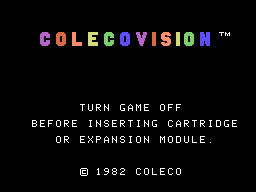
The ColecoVision hardware is very similar to the SG-1000 in terms of what is inside the case - a Z80 CPU, TMS9918 video and SN76489 sound. The memory map (as in, which address ranges map to which memory devices) is different, as is the I/O map (as in, the I/O ports that the various hardware components are connected to). To handle this case, the emulator now has a Family field, which can be set to Sega or ColecoVision. This controls which of the different mappings it uses for memory and hardware I/O.
Another difference is the presence of a BIOS ROM. The Sega Master System and Sega Game Gear consoles had the option of BIOS ROMs, but all these did was very basic initialisation and header/checksum checking. The ColecoVision, however, has an 8KB BIOS ROM that offers a lot of functionality to the programmer, so this must be present to run most ColecoVision games.
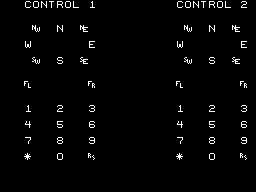
The controllers are also quite different. As well as the typical eight-direction joystick and two fire buttons, it added a 12-key keypad (0-9, * and #). This many keys is making my InputManager class look thoroughly idiotic, so that will certainly need a rewrite.
Apart from that, it's pretty simple. RAM is 1KB instead of 8KB; the sound generator uses the standard 15-bit wide shift register (instead of the 16-bit wide one used in the SMS); the video display processor interrupt output is connected to NMI rather than INT.
With those differences applied, it's easy to add the few lines of code to emulate the Multicolor video mode.

Smurf Paint 'n' Play Workshop
ColecoVision emulation has not been tested at all thoroughly, so chances are it doesn't work very well; Multicolor emulation has been tested with precisely one game!
You can download the latest build of Cogwheel from its website, featuring the new ColecoVision emulation.
SG-1000
Wednesday, 3rd January 2007
I've added some support for the SG-1000, Sega's first? home video game console.
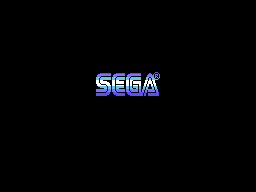
The Master System's VDP is a modified TMS9918, and so most Master System games run in its extended 'Mode 4' setting. That was the only video mode, therefore, that I'd emulated in any form.
For some reason, the older computer games are, the more charm they seem to have to me (maybe because the first games I played would have been on a BBC Micro, which certainly looked a lot more primitive than the Master System games I've been attempting to emulate thus far). I dug out TI's TMS9918 documentation - the differences are quite significant! Tiles are monochrome (though you can pick which foreground and background colour is in use - to some extent), the palette is fixed to 16 pre-defined colours (one of which being 'transparent') and sprite sizes and collisions are handled differently. Various features found in the Master System's VDP (scrolling, line-based interrupts) also appear to be missing from the 'vanilla' TMS9918, but I'm not sure whether or not they make an appearance in the SMS variation of the VDP or not, along with the original TMS9918 limitations.

Flipper
At any rate, the emulator now has a 'SG-1000' mode. The only differences at the moment are that the TMS9918 palette is used and line interrupts are disabled, so you can still (for example) use mode 4 on it.

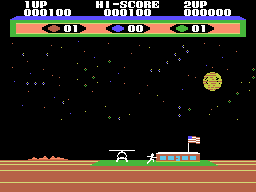

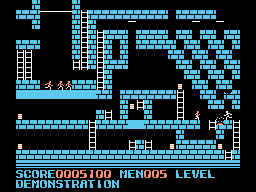




From first to last: Drol, Choplifter, Hustle Chummy, Championship LodeRunner, Space Invaders, H.E.R.O., Elevator Action, and Zaxxon.
All but one of the SG-1000 games I had ran - and that was The Castle. According to meka.nam, this has an extra 8KB of onboard RAM. Whilst doing some research into the SG-1000 and the TMS9918, I found a forum post by Maxim stating "The Castle runs nicely on my RAM cart :)". Enter the new ROM mapper option to complement Standard, Codemasters and Korean - it's the RAM mapper, which simply represents the entire Z80 address range with a 64KB RAM.
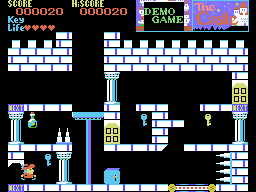

That seems to have done the trick!
I mentioned that the palette was different in the SMS VDP and the original TMS9918 - here's an example (SMS on the left, SG-1000 on the right):
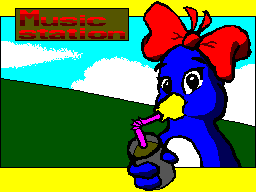
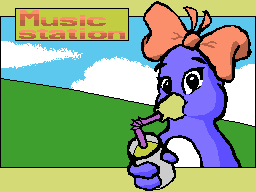
I'm assuming this is the result of truncating the TMS9918 palette to the SMS 6-bit palette without needing to implement two palette modes on the new VDP. Another comparison is between two versions of Wonder Boy - SMS on the left again, SG-1000 on the right:

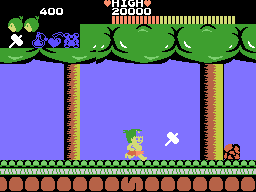
Subscribe to an RSS feed that only contains items with the TMS9918 tag.